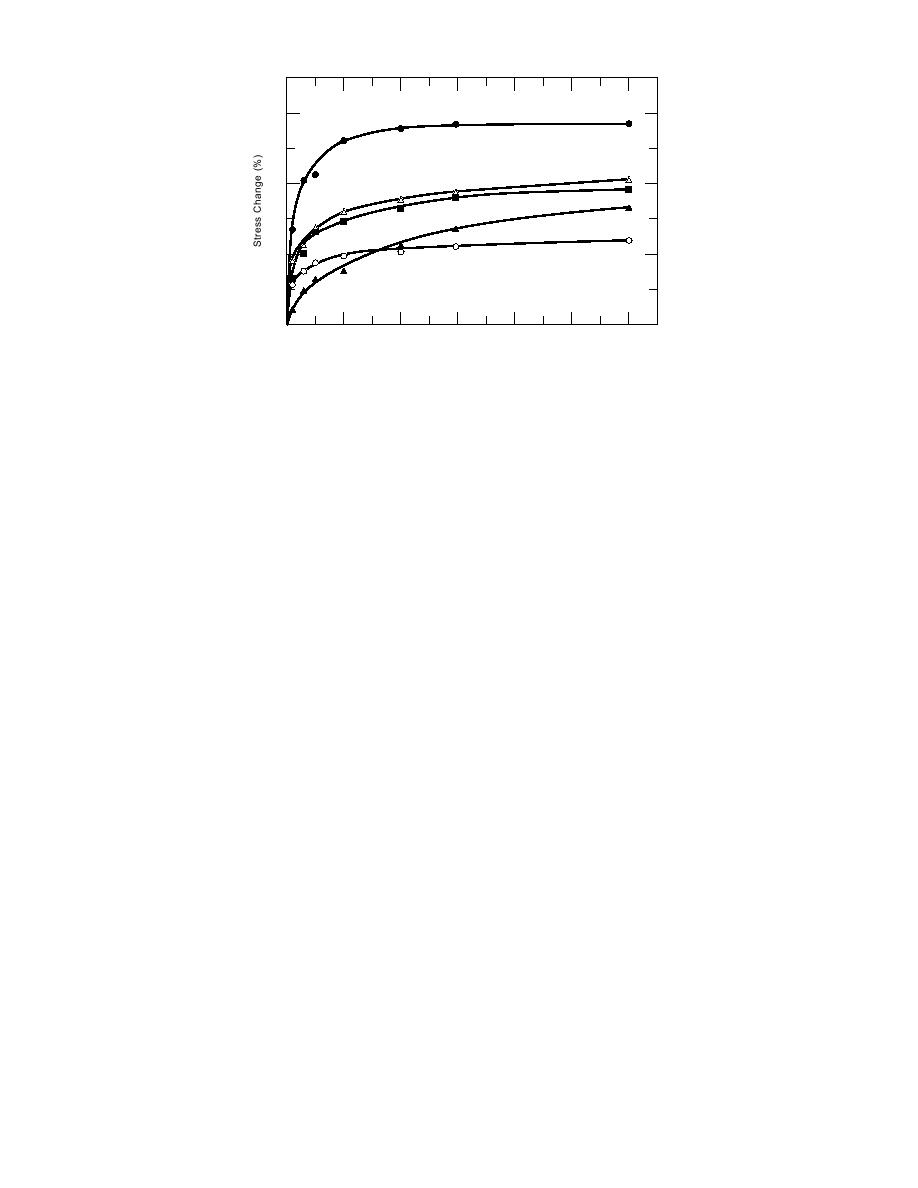
60
Rubberized Asphalt
Polyurethane
40
Silicone
Polysulfide
Preformed
20
0
0
10
20
30
40
50
60
Time (min)
Figure 16. Results from step deformation tests of butt joint seal
specimens formed from various sealants. (From Collins et al. 1986.)
The load and deformation responses shown
viscoelastically to any thermally or load-induced
in Figure 14, as well as secant stiffness values of
movement of the joint without failure of the seal
the model seals for 50% extension reported by
or the adhesive bond, and that it cure to a suffi-
Collins et al. (1986), show that significant stiffen-
cient hardness and remain sufficiently hard so that
ing of the responses occurred at 7C for all of the
it will not be damaged by indentation of harder
materials except the silicone sealant. The stiffen-
objects. Because joint movements are often large,
ing of the rubberized asphalt seal due to the tem-
joint seals must be expected to withstand large de-
perature reduction was extreme.
formations. Winter conditions are recognized as
Results from step deformation tests of poly-
the most critical for a seal because of the possibil-
sulfide butt joint seal specimens performed by
ity that failure stresses will be reached in the seal
Cook (1965) are shown in Figure 15. The load vs.
or at the adhesive interface as the joint opens and
time curve in Figure 15 reflects the stressrelaxa-
the material stiffens in response to the tempera-
tion material response and the viscous nature of
ture reduction. For all conditions the ideal behav-
the polysulfide sealant. Results from similar ex-
ior of a pavement joint seal is that of an elastomer.
periments reported by Collins et al. (1986) are
As a result sealants have been formulated with a
shown in Figure 16. These tests were conducted
rubber or elastomer as a base material in order to
at 22C (72F) using the materials of Figure 14
have relatively low resistance to load at low tem-
and the model seal geometry described above for
peratures.
the joint extension tests of Collins et al. (1986).
Pavement joint sealants that include a rubber
The measurements were made after extending
or elastomer as a base material are, in essence, elas-
the model seals 50% at a deformation rate of 25
tomeric compounds, and should be considered as
cm/min. The percent change in the nominal stress
such for research and engineering applications. Al-
vs. time is shown in Figure 16. It is interesting to
though plastic behavior is observed in the response
note that while all of the responses shown in this
of some sealant compounds containing elastomers,
figure reveal viscous behavior, as suggested by
in general these sealants are formulated and pro-
Collins et al. some of the behavior is viscoelastic
moted to behave with rubber-like characteristics.
and some viscoplastic. Without unloading curves
To describe the mechanical properties of these seal-
this distinction cannot be made, however.
ants it is helpful to consider sealant behavior in
the context of the behavior of rubbers and elas-
tomers since the material response features of prac-
SUMMARY AND
tical interest for sealing joints are clearly revealed,
RECOMMENDATIONS
and since the elastomeric qualities that a seal dis-
plays when subjected to field loadings and condi-
The primary mechanical requirements of a pave-
tions can be used to judge the effectiveness of the
ment joint seal are that it respond elastically or
sealant. Implicit in any description of an elasto-
17



 Previous Page
Previous Page
